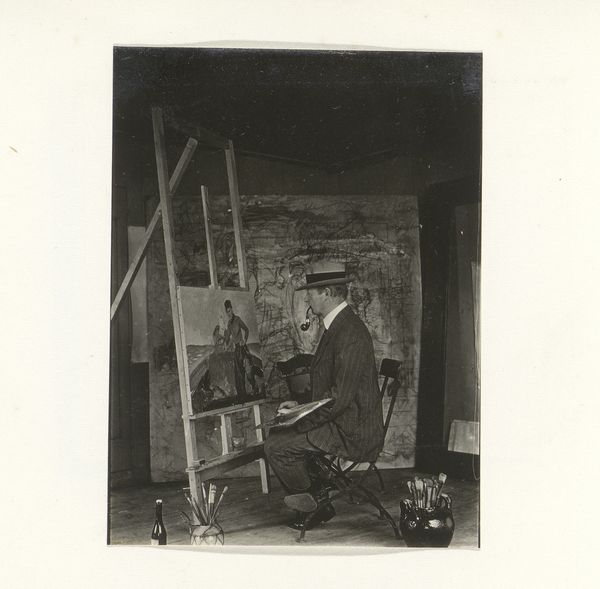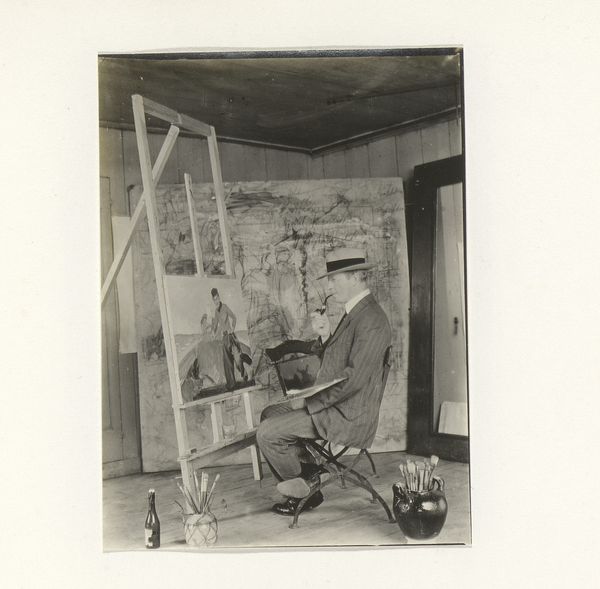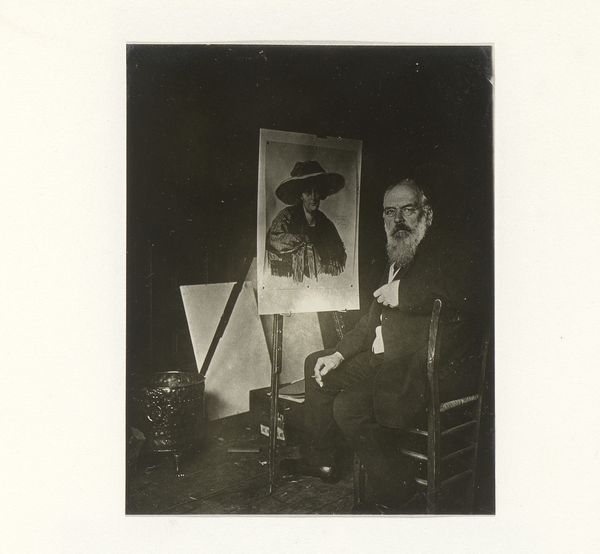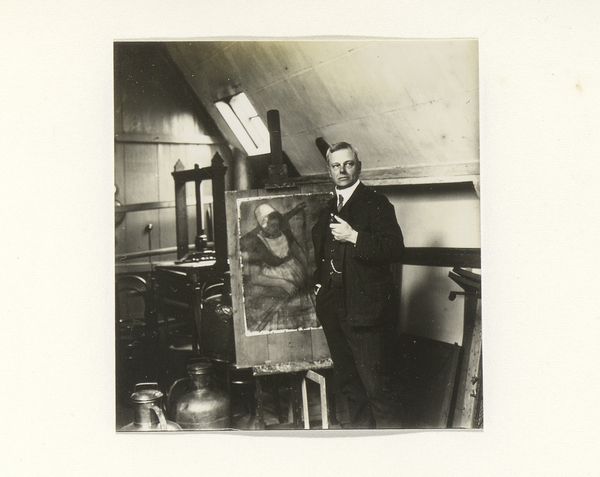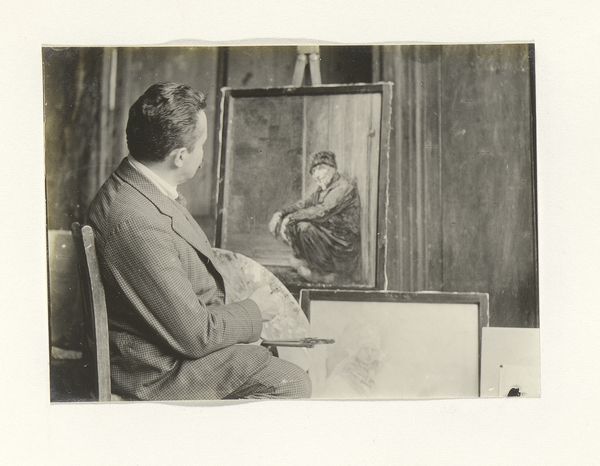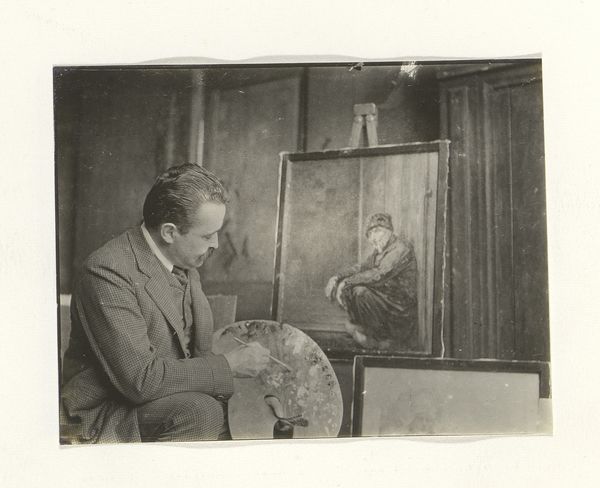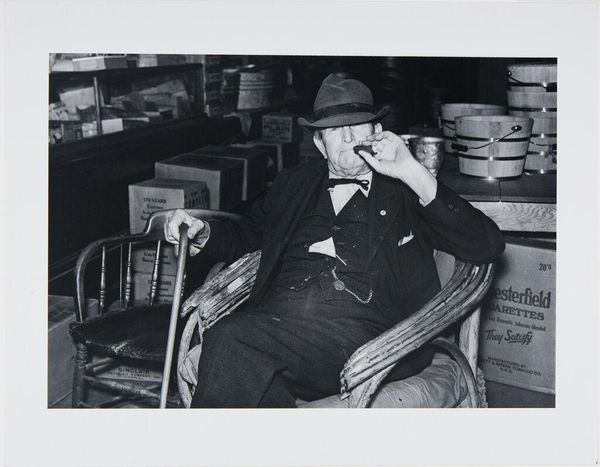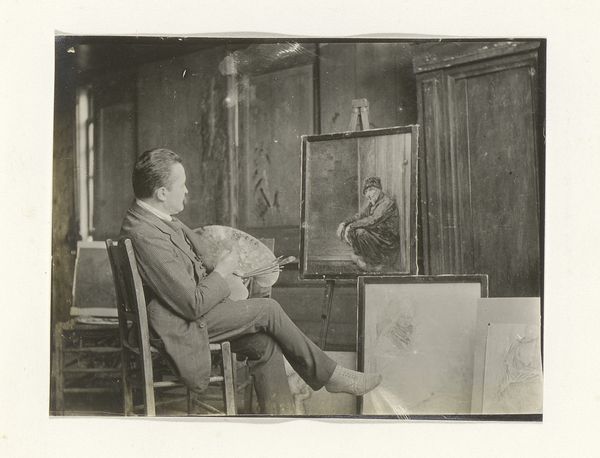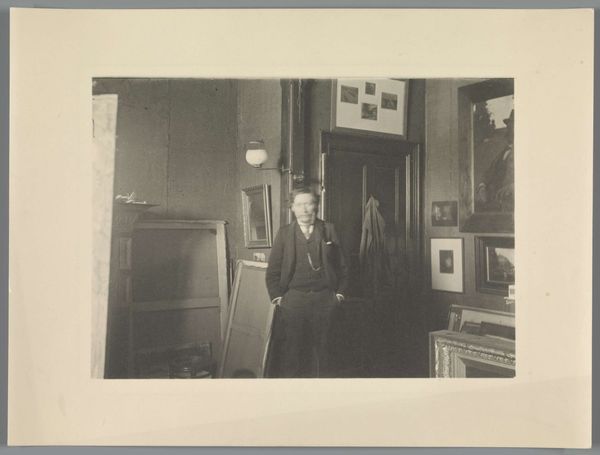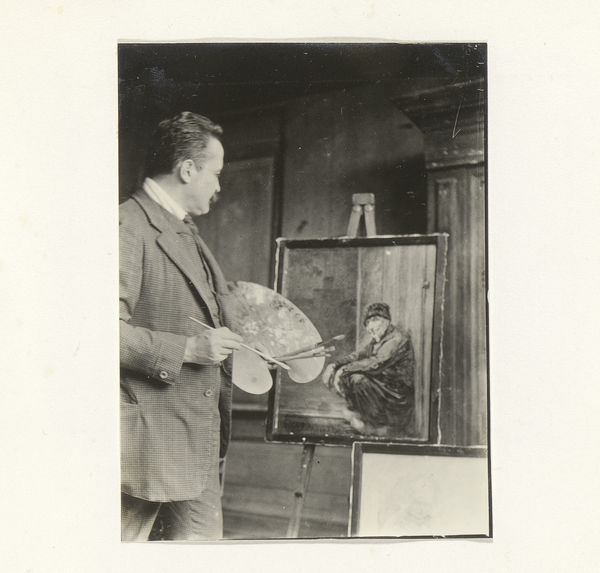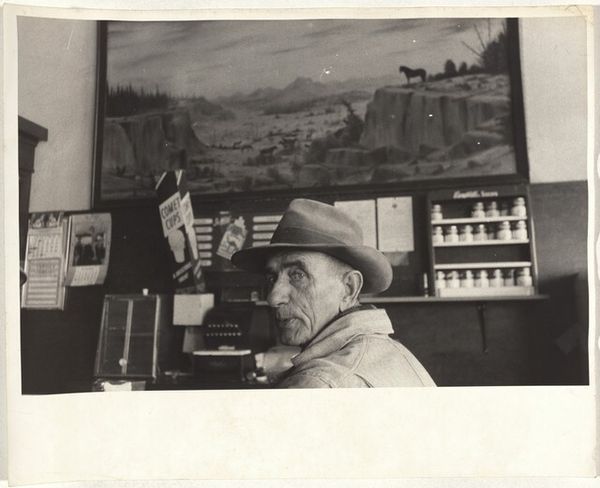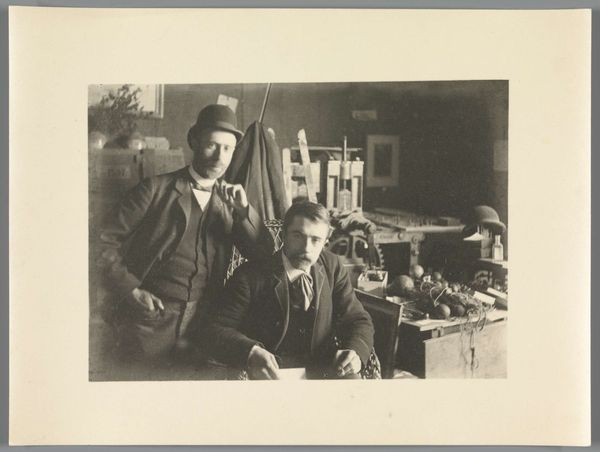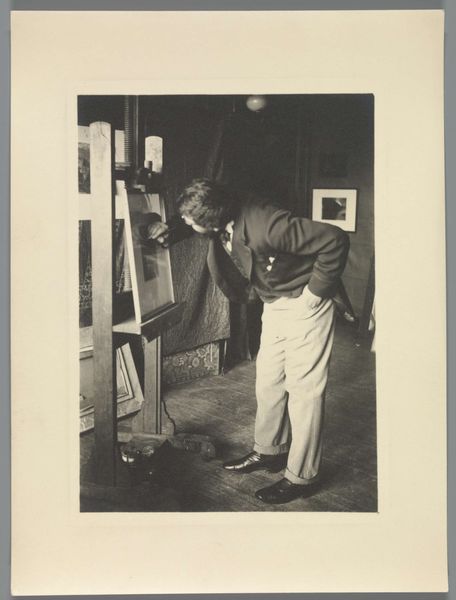
photography, gelatin-silver-print
#
portrait
#
photography
#
gelatin-silver-print
#
genre-painting
#
realism
Dimensions: height 74 mm, width 99 mm
Copyright: Rijks Museum: Open Domain
Editor: Here we have G. Hidderley's "Man in a Painter's Studio," a gelatin silver print from around 1900 to 1910. The artist’s depiction as subject feels particularly self-aware. What can you tell me about its broader context? Curator: It's fascinating how photography is used here, at the turn of the century, to depict the act of painting itself. The artist isn't just making art; he's constructing a particular image of the artist, carefully curated through clothing, the pose, and even the backdrop. Why do you think he chose to include a painting that depicts such a rural scene? Editor: Perhaps he wants to align himself with the tradition of genre painting, evoking a connection to rural life and labor, imbuing his persona with a certain gravitas and down-to-earth quality? Curator: Exactly! It's about constructing a specific identity and associating it with certain values. Think about the art world and its institutions at that time. Genre painting often had a very specific audience. In this light, how does the choice of medium play a part in the politics of this image? Editor: Photography made art and its aura more accessible. So by depicting himself in a more traditional, romantic artistic light using the photographic medium, is he both playing with and democratizing that image of the artist? Curator: Precisely. He's challenging the elite perception of artistry. It pushes the viewer to question preconceived notions of not only what art is, but what the life of the artist represents in the turn of the century. Editor: That really reframes the image for me. I see a careful negotiation of identity and accessibility that speaks to the changing art world. Curator: Absolutely. The photograph serves as a historical document of artistic identity, reflecting the democratizing forces within the art world during that period.
Comments
No comments
Be the first to comment and join the conversation on the ultimate creative platform.
